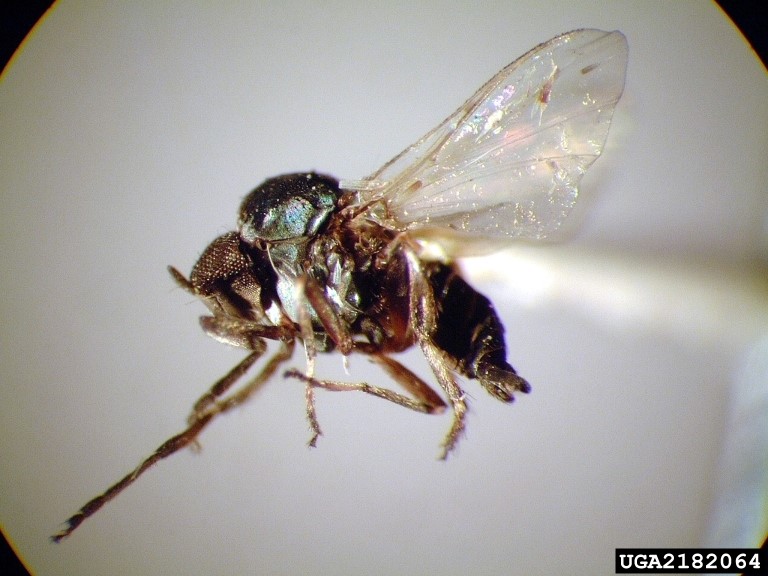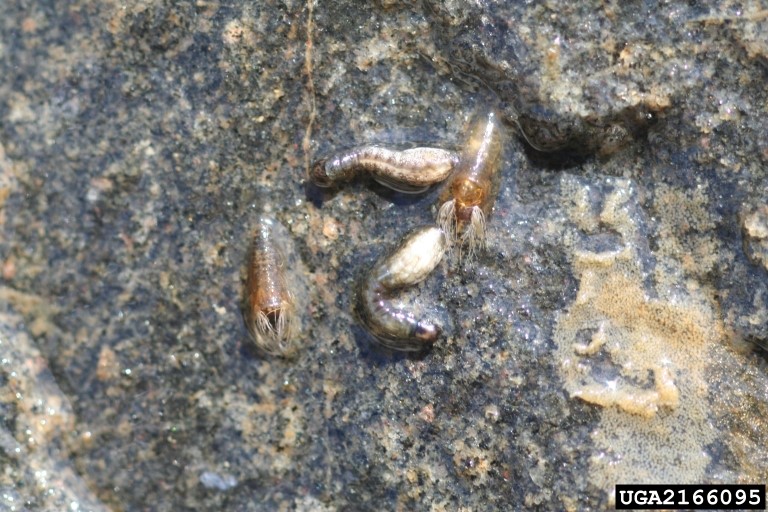Issue 5, June 18, 2019
Buffalo Gnats
Swarms of Buffalo Gnats
Insects can swarm for a variety of reasons. Bees swarm when they are preparing to leave their hive and establish a new one, locusts swarm when food becomes scarce and they need to relocate to feed, lovebugs swarm to find a mate efficiently and, for insects like buffalo gnats (also called black flies, Simuliidae), sometimes the local conditions are just right to support a larger than usual population. This year, Illinois has had cool, rainy conditions which are beneficial for buffalo gnats. Flooding and sustained high water levels may provide additional resources and reproductive habitat for the flies. Waterway restoration efforts can also create cleaner, healthier, aquatic ecosystem which benefit all aquatic animals, including buffalo gnats.


Left: Buffalo gnat adult, Darren Blackford, USDA Forest Service, Bugwood.org. Right: Black fly larvae, Whitney Cranshaw, Colorado State University, Bugwood.org
Life Cycle
Buffalo gnat adults lay eggs in flowing water or on plants trailing into flowing water. After hatching, the larvae attach silk to substrate, rocks or concrete surfaces submerged in the water and use hooks on their abdomen to cling to the silk. The larvae have fan-like structures near their mouths that they use to collect and feed on algae and small bits of organic matter. Eventually, the young flies will pupate and adults will emerge from the pupal casing, floating to the surface of the water in a small bubble of air.
As adults, buffalo gnats will mate, feed and lay eggs. Adults feel mainly on pollen and nectar from flowers but after mating, females require a blood meal so their eggs can mature. Unfortunately, that blood meal can come from livestock (mammals or poultry), pets or humans.
Control and Bite Prevention
Controlling buffalo gnat larvae usually is not possible. The larvae develop in flowing waterways that are protected by federal and state laws. The addition of pesticides to these habitats could result in fish kills or harm to other wildlife that use those waterways. The water from these habitats can also be used as drinking water for local communities so addition of pesticides also has the potential to harm people. As a result, the best strategy to deal with buffalo gnats is to prevent biting.
Buffalo gnats are active during the day and can travel long distances to feed. People who want to avoid being bitten can use repellents containing DEET, wear permethrin treated clothing or a head net to keep the flies away from their face and neck. Buffalo gnats are attracted to dark colors and cannot bite through clothing so wearing light colored clothes with long sleeves can help prevent bites. Remaining indoors when populations are especially high can also help avoid bites because buffalo gnats rarely move into homes.
If buffalo gnat populations are large enough they can also cause problems for pets and livestock. Keeping pets indoors, when possible, can help prevent bites. In dense fly populations, excessive blood feeding, disease transmission to poultry or inhalation of too many flies can lead to the loss of livestock. Moving livestock into barns or other enclosed housing structures can reduce the impact of buffalo gnats. If that is not possible or practical, repellants or pesticide treatments can help ensure livestock safety.
Buffalo gnats usually live for a short time in their adult life stage. After a few weeks of activity, their numbers will decline and we will not see them again until next year.